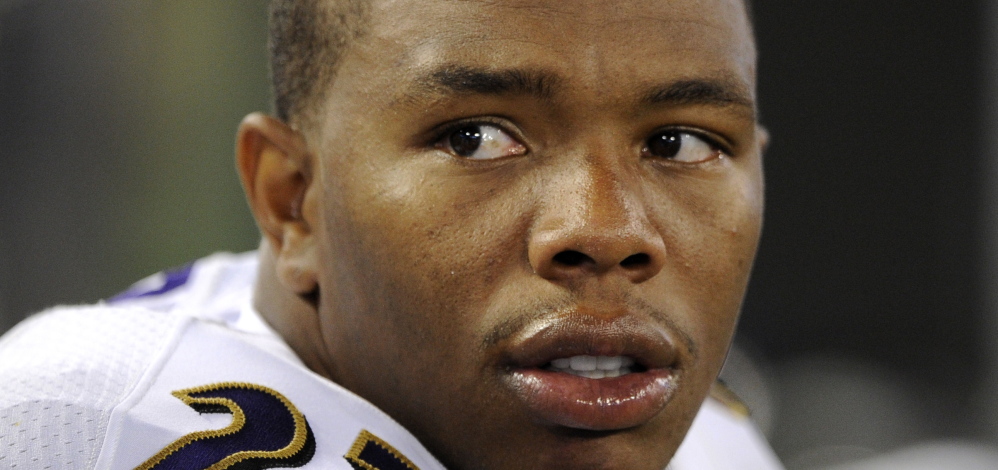NFL Commissioner Roger Goodell has bungled the Ray Rice case at every step, and it should cost him his job at the top of the country’s most popular sports league.
But Goodell wasn’t the only person at NFL headquarters who saw the first tape of Rice, dragging his unconscious then-fiancee, Janay Palmer, across the floor of a New Jersey casino, and thought that the initial two-game suspension was enough. And while that decision drew a significant amount of fire for its leniency, it took the revelation of the second, more brutal video for the NFL to take real action on Rice.
That’s a sign that despite significant progress on addressing domestic violence, many people – even some of those at the top of a multibillion-dollar business like the NFL – still do not take the issue seriously. Getting rid of Goodell is the right thing to do, and it may feel cathartic to everyone he has offended. But it won’t address the lingering challenges presented by attitudes toward domestic violence, in the NFL or the United States in general.
SLOW TO ACT
Rice was released by his team, the Baltimore Ravens, and suspended indefinitely by the NFL on Monday, after video footage surfaced of Rice punching Palmer in an elevator in Atlantic City, knocking her unconscious. But it shouldn’t have taken that long.
The incident itself occurred in February, and celebrity gossip website TMZ released the first surveillance tape just four days later. Given the events depicted in that recording and the information in the police report from that night, it didn’t take much imagination to figure out what had occurred.
Rice pleaded not guilty to aggravated assault in May and entered a diversionary program for first-time offenders. In June, Rice met with Goodell, telling the commissioner that he had only been defending himself in the elevator. Five weeks later, he was issued a two-game suspension.
The commissioner was widely criticized for the suspension, which was held in contrast to the yearlong ban given to Cleveland Browns receiver Josh Gordon, who had failed multiple tests for marijuana, violating the league’s substance abuse policy.
MISPLACED PRIORITIES
The two cases highlighted the misplaced priorities in the NFL universe.
Throughout the summer, Gordon was portrayed as a troubled drug addict, even though he had passed dozens of drug tests before the one failure, which reportedly was for a level of marijuana so low it was barely detectable.
At the same time, media professionals who so often carry the NFL’s water painted Rice as a good man and team leader who made a mistake. Present in many reports was a sense that both parties were at fault with what happened in the elevator.
That was the same story the NFL pushed in the wake of the initial suspension, but it all fell apart when the second video was aired.
Goodell said that the NFL saw the second video, showing the punch, at the same time as the general public. That strains credibility, and The Associated Press is reporting that a law enforcement official sent the league a copy of the tape weeks ago.
There’s now speculation that if Goodell hadn’t seen the tape when he initially suspended Rice, it was on purpose, to give the commissioner cover as he let Rice off easy, allowing the league to move on quickly.
Whether that’s the case hardly matters when it comes to the issue of domestic violence. NFL officials should have reacted strongly and instinctively to the first video. They should have wanted to hand down a harsh punishment, and not just for fear of a public backlash if they didn’t.
The video should have hit them square in the gut. Instead, they wanted to explain it away. They wanted to take Rice’s word and put the incident behind them.
Unfortunately, that’s the kind of attitude that condones domestic violence. And despite years of work by victims advocates and anti-violence organizations, it persists.
Copy the Story LinkSend questions/comments to the editors.



Success. Please wait for the page to reload. If the page does not reload within 5 seconds, please refresh the page.
Enter your email and password to access comments.
Hi, to comment on stories you must . This profile is in addition to your subscription and website login.
Already have a commenting profile? .
Invalid username/password.
Please check your email to confirm and complete your registration.
Only subscribers are eligible to post comments. Please subscribe or login first for digital access. Here’s why.
Use the form below to reset your password. When you've submitted your account email, we will send an email with a reset code.